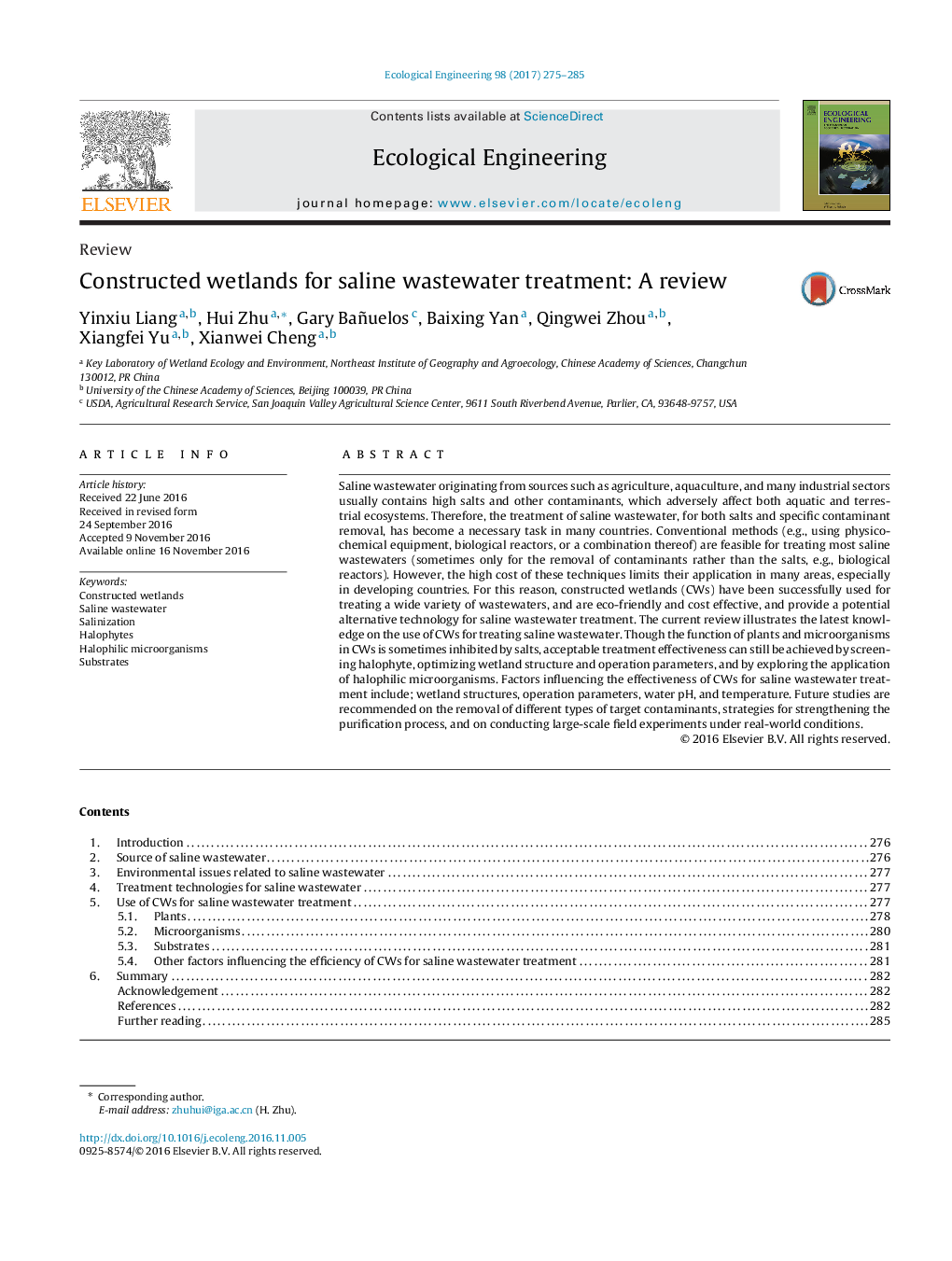| کد مقاله | کد نشریه | سال انتشار | مقاله انگلیسی | نسخه تمام متن |
|---|---|---|---|---|
| 5744078 | 1618001 | 2017 | 11 صفحه PDF | دانلود رایگان |

Saline wastewater originating from sources such as agriculture, aquaculture, and many industrial sectors usually contains high salts and other contaminants, which adversely affect both aquatic and terrestrial ecosystems. Therefore, the treatment of saline wastewater, for both salts and specific contaminant removal, has become a necessary task in many countries. Conventional methods (e.g., using physicochemical equipment, biological reactors, or a combination thereof) are feasible for treating most saline wastewaters (sometimes only for the removal of contaminants rather than the salts, e.g., biological reactors). However, the high cost of these techniques limits their application in many areas, especially in developing countries. For this reason, constructed wetlands (CWs) have been successfully used for treating a wide variety of wastewaters, and are eco-friendly and cost effective, and provide a potential alternative technology for saline wastewater treatment. The current review illustrates the latest knowledge on the use of CWs for treating saline wastewater. Though the function of plants and microorganisms in CWs is sometimes inhibited by salts, acceptable treatment effectiveness can still be achieved by screening halophyte, optimizing wetland structure and operation parameters, and by exploring the application of halophilic microorganisms. Factors influencing the effectiveness of CWs for saline wastewater treatment include; wetland structures, operation parameters, water pH, and temperature. Future studies are recommended on the removal of different types of target contaminants, strategies for strengthening the purification process, and on conducting large-scale field experiments under real-world conditions.
Journal: Ecological Engineering - Volume 98, January 2017, Pages 275-285